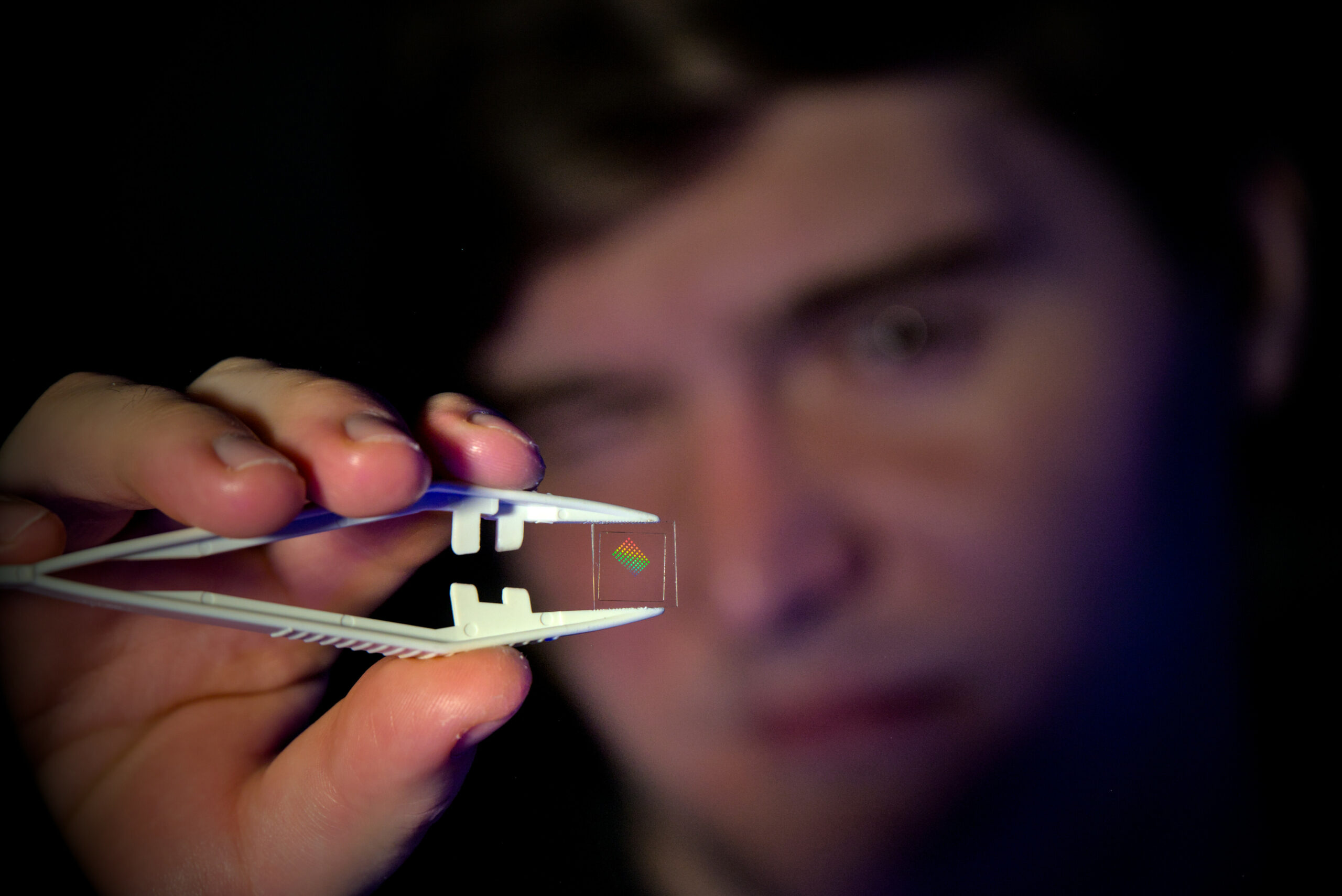Flat but outstanding: novel optical devices for quantum technology
by Max Gmelch (SAOT)
The heaviest part of a high-end camera is the objective. The high-quality optics built into it are large and made of heavy glass. In today’s smartphone camera, you find mini versions of the same, with drastically reduced weight and consumption of space. But this is nothing compared to so-called flat optics, a cutting-edge research field in photonics.
Flat optics are structures in the size of the wavelength of light or even smaller. You would need like 200 pieces of flat optics stacked on top of each other to reach the thickness of one single human hair. In addition to this incredible tiny size, they come along with unique abilities in producing and shaping light.
This also impacts the field of quantum optics, i.e. the controlled generation, manipulation, and detection of individual light particles, namely photons, and their properties. Vitaliy Sultanov recently published on “Flat-optics generation of broadband photon pairs with tunable polarization entanglement”. They used flat optics made of gallium phosphide, a common LED material, to generate photons with powerful quantum properties: when illuminated with a proper laser, the flat optics emit entangled photons.
Entangled photons are pairs of light particles whose properties and states affect each other, no matter how far they are separated from each other. Even though Einstein denied this behavior in 1947, calling it ‘spooky actions at a distance’, it nowadays has been proven in many experiments, including Vitaliy’s work. In his experiment, he even managed to tune the amount of entanglement. Thus, his flat optics may become a powerful tool in further research on quantum optics.
A subsequent publication that Vitaliy contributed to covers emission of entangled photons from a metasurface, a surface with tiny artificial periodic structures. For the first time, they show emission of two entangled photons from a nanoscale source into opposite directions. This opens the path for an efficient separation of entangled photons in quantum optics. Details are found in the article “Photon pairs bi-directionally emitted from a resonant metasurface”.
Vitaliy works in the Quantum Radiation Group of Maria Chekhova at the Max Planck Institute for the Science of Light. His work is part of QuCoLiMa Area C: Quantum cooperativity induced by interactions. The original publications can be found in Optics Letters and in Nanoscale.




